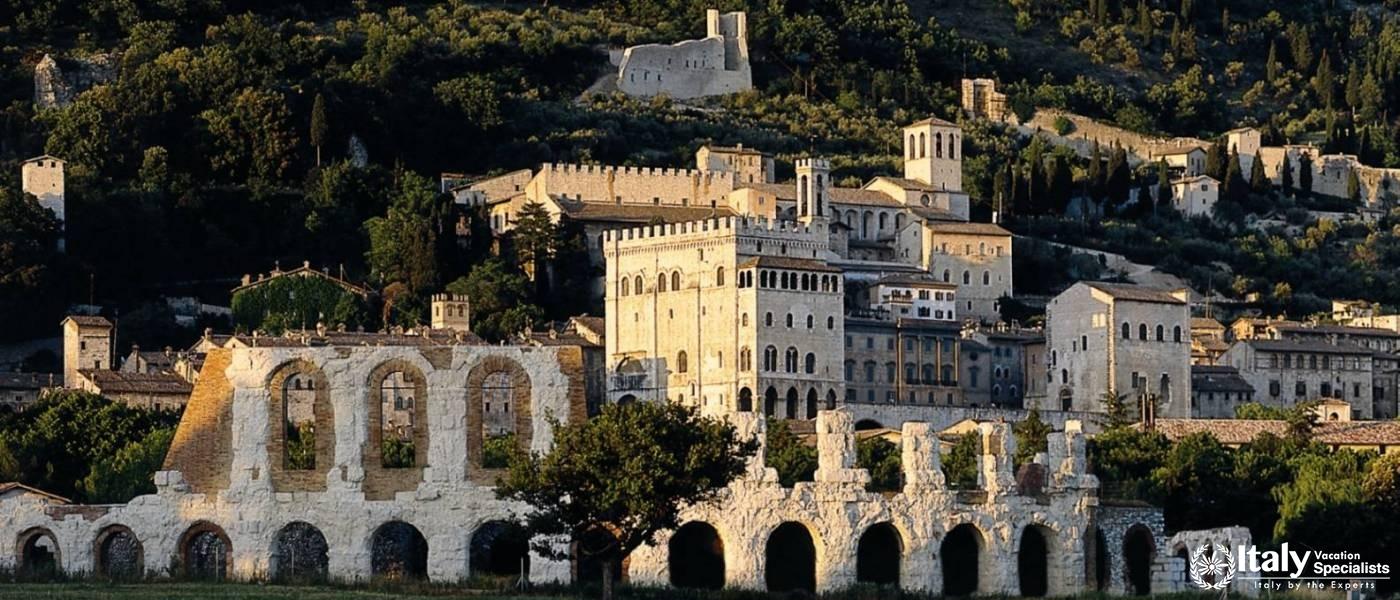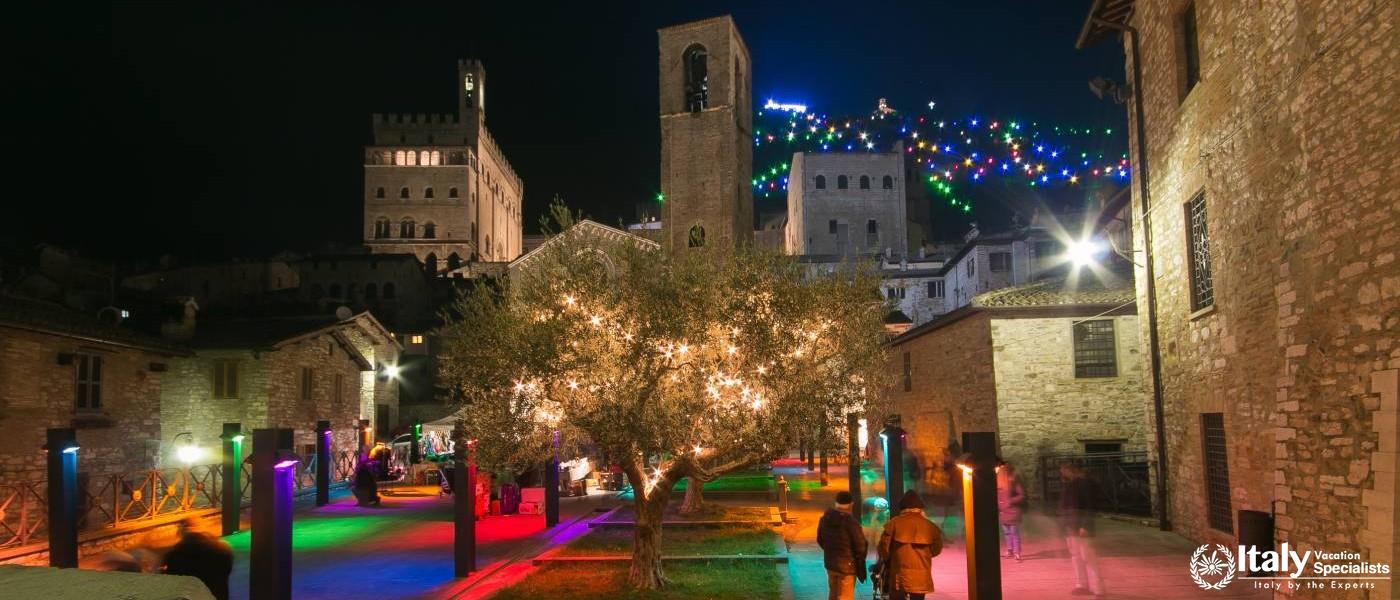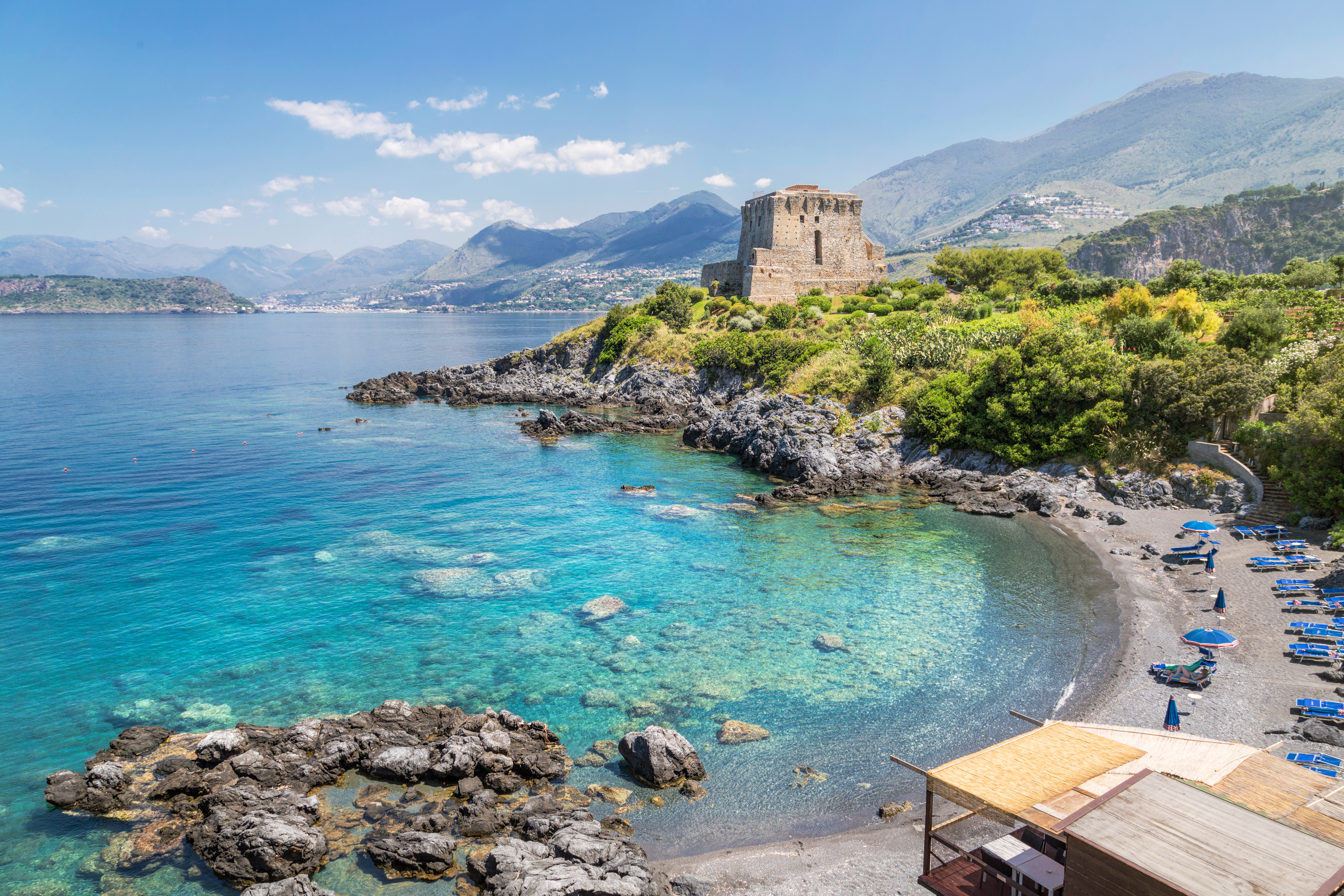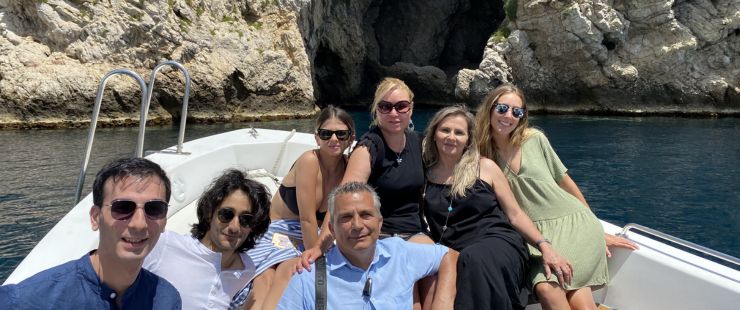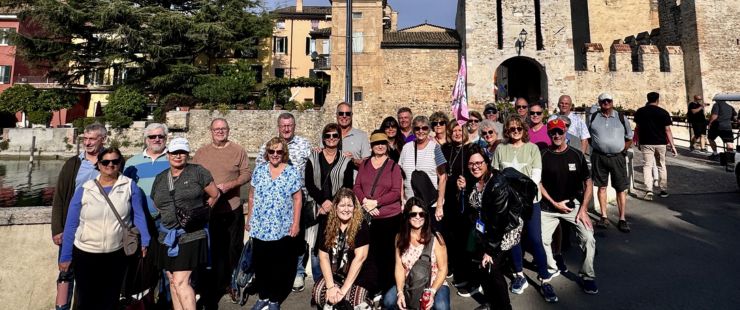Overview
Gubbio is the largest city in north eastern Umbria an a wonderful place to visit during your time in Umbria.
You could travel during a quiet time - which is most of the year, or, if you want to see something heart-poundingly exciting you could visit Gubbio during the Corsa dei Ceri - the justifiably famous "Candle Race" which has been run on an uninterrupted basis every May 15th since the last years of the 12th Century. Stick around 'til the end of the month when things are a little less frenetic and you can catch another colorful medieval contest, the Racing Silk of the Crossbow. Stay out of the way of the bolts, which can be quite deadly.
The Corsa dei Ceri race starts, and the crossbow contest takes place in the Grande Piazza in front of the imposing and interesting Palazzo del Consoli, which you for a small fee you can enter and tour. Afterward, you can turn west down the hill past several large mansions, once owned by the important merchant families of the city, until you come to the Palazzo del Bargello. Here you may acquire a certificate of lunacy by carrying out an ancient Eugubian ritual. All you have to do is run around the Fontana de Pazzi (Fountain of the Crazies) three times while three locals splash water on you. The certificate will be issue by one of the nearby shopkeepers.
Please note, on your way past many of the Palazzi on the main streets of the city, the bricked-up half doors near and sometimes above the main door. These are called the "doors of the dead" because, it is said, they were the portals through which deceased family members were taken out of the house. A more likely explanation is that they were an integral part of the household defense during wars, riots and other mayhem.
Gubbio, which has a population of about 17,000 souls, sits on the slopes of Mt. Ingino, a smallish mountain in the Appenines. Like other cities in Umbria, and nearby Tuscany, it has had a long, and frequently violent history since its founding by the Umbrian tribal peoples, through its domination by the Etruscans, then Romans. It became part of the Papal States after the collapse of the Roman Empire where it remained until annexed to Italy during the unification in 1860. The last bit of nasty business occurred during World War II, when the Nazis shot 40 civilians as a reprisal against the activities of the local underground.
Gubbio is a walled city of grey stone, with narrow, windy streets, which remain cool even when it is unbearable hot under the Umbrian sun. You will find the Duomo (San Pietro) near the top of the city, several other churches worth taking a look into, and a number of museums and galleries which house numerous historical artifacts and artworks.
The city is also rightly famous for its ceramics, and you will find many shops displaying works in vivid and sometimes wild color. Visit a few shops and do some comparison shopping before making a purchase, and don't be afraid to bargain hard for the best price.
Before you climb up into the city, which will tax even the strongest legs, you may wish to take a look at the ruins of the second largest Roman Theatre in Italy, located outside the walls to the south and west. Most of its limestone rock has been pilfered over the centuries for use in other buildings, but there has been some restoration work done. Usually the theater is closed to the public, but during the summer it is used for classical concerts under the stars. If that is not soothing enough for you, you can visit the site of the nearby Roman tombs and contemplate your own mortality.
After you have completed your tour of the old medieval city, we recommend you find your way to the Porta Romana on the eastern wall. This gate is the only one left of six identical 13 century towers which formed part of the city's defenses. It is now privately owned, but the owners have created a small and interesting museum with an eclectic and captivating array of artifacts.
Close by the Porta Romana you will find the lower terminus of a cableway which will convey you to the top of Mt. Ingino where you will find the Basilica of St. Ubaldo. It is a stand-up only car which will whisk you up (and later, down) the 360 or so vertical meters from the station. As you stand agog inside the cable car, think of the teams of men who race the 400 pound "ceris" up to the Basilica from the Piazza Grande during the May 15th festival. Talk about taking your breath away!
And that's it. Gubbio is a a must stop see for history buffs, museum goers, ceramics collectors, architecture aficionados, food lovers, religious pilgrims and anyone who likes to combine exercise with sightseeing.
Gallery
Location
Private and Small Group Tours
Multi-Day Holidays Tours
Hotel
Villas
Apartment
Gallery
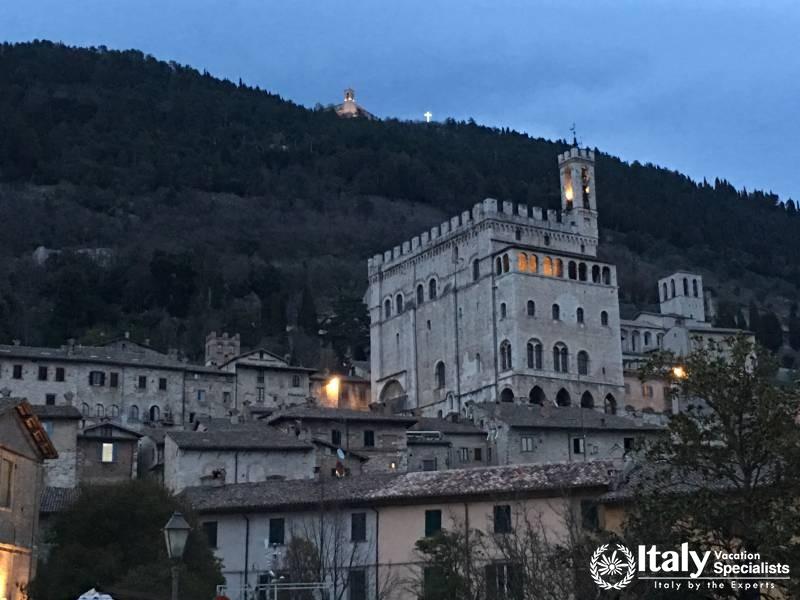
For Customized Holidays and Expert Advice, for travel in Italy and the Mediterranean,
get in touch with your travel agent or contact us via our
Trip Planning Questionnaire.
-
Direct In Italy: +39 375 823 5314
-
Toll Free: 1-866-779-2565
